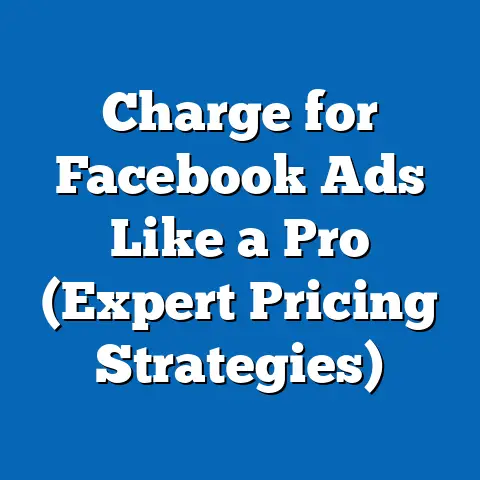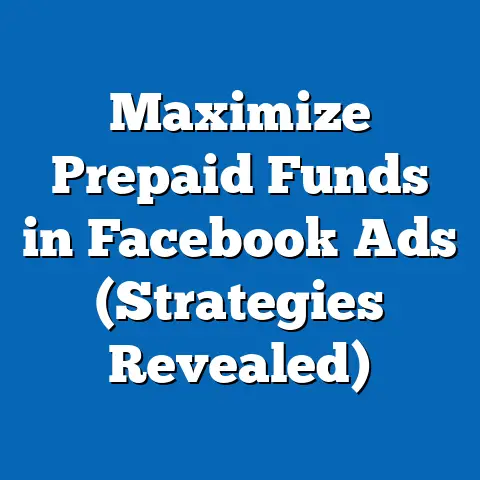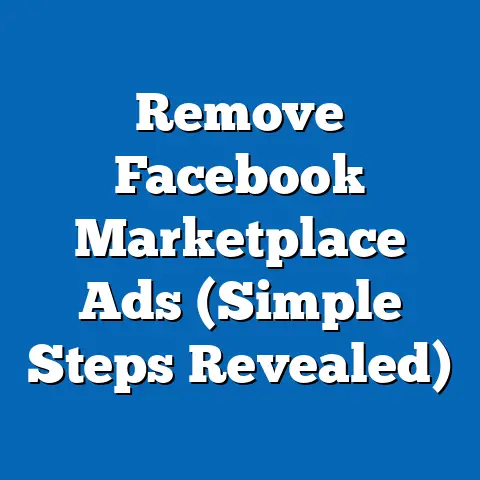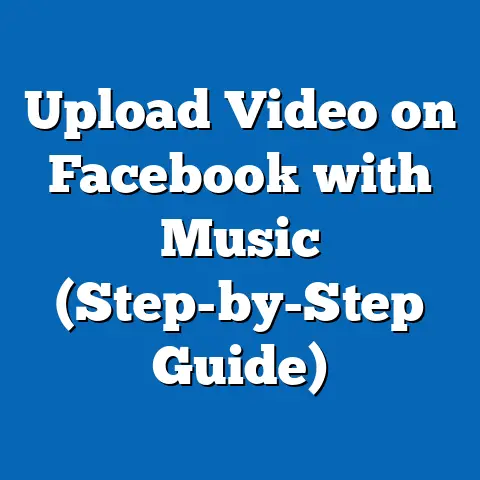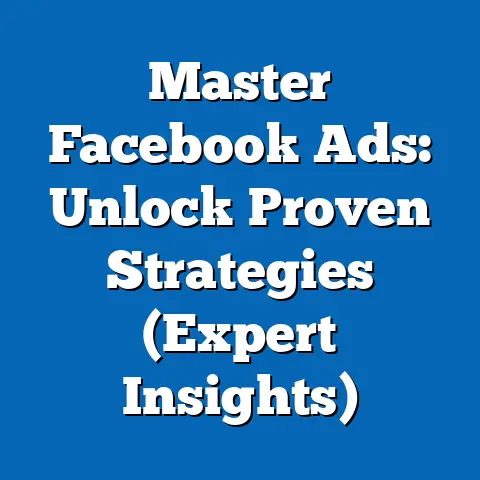Escalar Campañas de Facebook Ads (Estrategias Probadas)
In the ever-evolving world of digital marketing, businesses face a formidable challenge: how to cut through the noise on platforms like Facebook, where over 2.9 billion monthly active users create a saturated advertising environment. With advertisers spending an estimated $124 billion on social media ads globally in 2022, according to Statista, the competition for attention is fiercer than ever. For small and medium-sized enterprises (SMEs) in particular, scaling Facebook Ads campaigns—referred to as “Escalar Campañas de Facebook Ads” in Spanish-speaking markets—requires not just creativity but a data-driven approach to ensure every dollar yields measurable returns.
Key statistical trends reveal the stakes of this challenge. In 2023, the average cost-per-click (CPC) on Facebook Ads rose to $0.97, a 17% increase from $0.83 in 2021, as reported by WordStream. Meanwhile, the average click-through rate (CTR) across industries hovers at just 0.9%, meaning only a tiny fraction of impressions translate into engagement. These figures underscore the need for proven strategies to escalate campaigns effectively, particularly for businesses targeting diverse demographics with varying behaviors and preferences.
This article dives deep into the art and science of scaling Facebook Ads campaigns, unpacking strategies backed by data and real-world case studies. We’ll explore demographic breakdowns to understand who engages most, historical trends to contextualize current challenges, and actionable tactics to optimize ad spend. Finally, we’ll look ahead to future projections for Facebook advertising, equipping marketers with insights to stay ahead in a dynamic landscape.
The Digital Advertising Boom: Why Scaling Matters
The Rising Investment in Facebook Ads
Facebook remains a cornerstone of digital advertising, with businesses of all sizes leveraging its unparalleled reach. According to eMarketer, Facebook accounted for 21.7% of global digital ad spending in 2022, totaling over $58 billion in revenue for the platform. This figure is expected to grow as more companies shift budgets from traditional media to digital channels, driven by the platform’s ability to target specific audiences with precision.
However, the influx of advertisers has driven up costs. Between 2019 and 2023, the average cost-per-thousand-impressions (CPM) on Facebook increased by 61%, from $7.19 to $11.54, per Hootsuite’s Digital 2023 Report. For businesses looking to scale, this means that simply increasing ad spend isn’t enough—efficiency and strategic planning are critical to avoid diminishing returns.
The Scaling Challenge for SMEs
For SMEs, scaling a Facebook Ads campaign often means transitioning from a modest budget of $500-$1,000 per month to $5,000 or more while maintaining or improving return on ad spend (ROAS). A 2022 survey by HubSpot found that only 34% of SMEs reported achieving a ROAS of 3:1 or higher on social media ads, indicating that many struggle to scale effectively. The primary obstacles include audience saturation, ad fatigue, and a lack of data-driven optimization.
Scaling isn’t just about spending more; it’s about spending smarter. This requires a deep understanding of audience behavior, creative testing, and leveraging Facebook’s algorithmic tools to maximize reach and conversions. Let’s break this down further with demographic insights and proven strategies.
Demographic Breakdowns: Who Engages with Facebook Ads?
Age and Gender Trends
Understanding who interacts with Facebook Ads is the foundation of any scaling strategy. According to Pew Research Center’s 2023 data, 69% of U.S. adults use Facebook, but engagement varies widely by age and gender. Adults aged 18-29 are the most active, with 76% using the platform daily, compared to just 40% of those aged 65 and older.
When it comes to ad engagement, younger users (18-34) exhibit higher CTRs, averaging 1.2%, compared to 0.7% for users aged 35-54, per Sprout Social’s 2023 report. Gender differences are less pronounced, though women tend to engage slightly more with ads related to lifestyle and fashion (CTR of 1.1%) compared to men (0.9%). For businesses scaling campaigns, these nuances suggest that creative content and targeting parameters must be tailored to resonate with specific age and gender cohorts.
Geographic and Income Disparities
Geography also plays a significant role in ad performance. In the U.S., urban users are 15% more likely to click on ads than rural users, largely due to higher internet penetration and mobile usage, according to Nielsen’s 2022 Digital Consumer Report. Globally, markets like Latin America and Southeast Asia offer lower CPCs—averaging $0.40 and $0.52, respectively—making them attractive for businesses scaling internationally, per AdEspresso’s 2023 data.
Income levels further influence engagement. Users in higher-income brackets ($75,000+ annually) are more likely to convert on high-ticket items, with a conversion rate of 2.3%, compared to 1.5% for those earning under $30,000, as reported by Statista. For scaling campaigns, this suggests a need to segment audiences by purchasing power and tailor messaging to reflect their economic context.
Behavioral Insights Across Demographics
Behavioral data reveals additional layers of complexity. For instance, Facebook’s own 2023 Audience Insights data shows that users who engage with video content have a 30% higher likelihood of clicking on ads than those who primarily interact with static posts. Parents, particularly those aged 25-44, are a key demographic for family-oriented products, with a 25% higher conversion rate on relevant ads compared to non-parents.
These demographic insights highlight a critical principle for scaling: hyper-targeting. By segmenting audiences based on age, gender, location, income, and behavior, businesses can allocate budgets to high-performing groups, ensuring efficient scaling. (Reference Chart: Demographic Engagement Rates by Age and Gender, Sprout Social 2023)
Historical Trends: How Facebook Ads Have Evolved
Cost and Performance Metrics Over Time
To appreciate the current challenges of scaling Facebook Ads, it’s essential to look at historical trends. In 2015, the average CPC on Facebook was just $0.27, and CPMs were around $4.12, according to WordStream’s historical data. By 2020, these figures had risen to $0.78 and $9.77, respectively, driven by increased competition and platform updates that prioritized user experience over ad density.
Post-2020, the iOS 14.5 update and subsequent privacy changes significantly impacted ad targeting capabilities. According to a 2021 report by AppsFlyer, advertisers saw a 20% drop in attributable conversions due to Apple’s App Tracking Transparency (ATT) framework. This forced marketers to pivot toward broader targeting and contextual advertising, a trend that continues to shape scaling strategies today.
Shifts in Audience Behavior
Audience behavior has also evolved. In 2015, desktop usage dominated Facebook engagement, with 68% of ad clicks originating from computers, per eMarketer. By 2023, mobile devices account for 94% of ad interactions, reflecting the global shift to smartphones. This transition underscores the importance of mobile-optimized creatives when scaling campaigns.
Moreover, ad fatigue has become a growing concern. A 2018 study by Kantar found that 74% of users felt overwhelmed by repetitive ads; by 2022, this figure rose to 81%. Historically, scaling meant increasing frequency, but today, it requires refreshing creatives and diversifying ad formats to maintain engagement.
Algorithmic Changes and Their Impact
Facebook’s algorithm has undergone significant changes over the past decade, affecting how ads are delivered. The 2018 shift to prioritize “meaningful interactions” reduced organic reach for brands, pushing ad spend higher. By 2023, machine learning advancements have enabled better ad personalization, but they also demand higher-quality content to achieve visibility—a key consideration for scaling.
These historical trends reveal a clear pattern: scaling Facebook Ads campaigns has become more complex and costly over time. Businesses must adapt to technological, behavioral, and algorithmic shifts to remain competitive. (Reference Chart: CPC and CPM Trends 2015-2023, WordStream)
Proven Strategies for Escalating Facebook Ads Campaigns
1. Audience Segmentation and Lookalike Audiences
Scaling begins with precise targeting. One of the most effective strategies is using lookalike audiences, which allow advertisers to reach users similar to their best customers. According to Facebook’s 2022 case studies, campaigns using lookalike audiences saw a 37% higher ROAS compared to broad targeting.
Start by uploading customer data (e.g., email lists) to create a custom audience, then build lookalikes based on a 1-2% similarity match for optimal results. As budgets scale, gradually expand to larger lookalike segments (3-5%) while monitoring performance metrics like CTR and cost-per-acquisition (CPA).
2. Creative Optimization and A/B Testing
Creative fatigue is a major barrier to scaling. A 2023 study by Social Media Examiner found that campaigns with rotating ad creatives (images, videos, copy) maintained a 22% higher CTR over 30 days compared to static ads. When scaling, allocate 20-30% of the budget to A/B testing different visuals, headlines, and calls-to-action (CTAs) to identify top performers.
Video ads, in particular, are a powerful tool. Facebook reports that video ads achieve 6.09% higher engagement rates than static images. Invest in short, thumb-stopping videos (15-30 seconds) that convey value propositions clearly, especially for mobile-first audiences.
3. Budget Allocation and Campaign Structure
Effective scaling requires a structured approach to budgeting. Start with the Campaign Budget Optimization (CBO) feature, which automatically distributes spend across ad sets to maximize results. A 2022 report by AdEspresso found that CBO campaigns reduced CPA by 18% compared to manual allocation.
As budgets increase, avoid scaling too quickly—Facebook’s algorithm needs time to optimize. Increase spend by 20-30% every 3-5 days, monitoring for drops in ROAS. Additionally, use dynamic ads for retargeting; these ads, which personalize content based on user behavior, deliver a 2.5x higher conversion rate, per Facebook’s internal data.
4. Retargeting and Funnel Optimization
Scaling isn’t just about acquiring new users; it’s about converting existing ones. Retargeting campaigns targeting website visitors or past engagers achieve a 70% higher conversion rate than cold audiences, according to WordStream. Use pixel tracking to segment users by funnel stage (awareness, consideration, conversion) and tailor messaging accordingly.
For example, offer discounts or free trials to users who abandoned carts, as 26% of such users convert when retargeted with incentives, per Criteo’s 2023 report. As budgets scale, allocate 30-40% to retargeting to maximize ROI from warm leads.
5. Leveraging Advanced Tools and Analytics
Facebook’s Ads Manager provides robust tools for scaling, such as automated rules and machine learning-driven bidding strategies. Set rules to pause underperforming ads (e.g., CPA above $50) and scale winners (e.g., ROAS above 4:1). A 2023 study by Hootsuite found that automated bidding reduced CPC by 14% for scaled campaigns.
Additionally, integrate third-party analytics like Google Analytics to track cross-platform behavior. This ensures a holistic view of campaign performance, especially when scaling into new markets or demographics.
Statistical Comparisons Across Industries
E-commerce vs. B2B Performance
Industry benchmarks provide context for scaling expectations. E-commerce campaigns typically see higher CTRs (1.11%) and conversion rates (2.9%) due to direct purchase intent, per WordStream 2023 data. In contrast, B2B campaigns average a lower CTR (0.78%) but higher CPAs ($18.68) due to longer sales cycles.
When scaling, e-commerce businesses should focus on dynamic product ads and retargeting, while B2B marketers benefit from lead gen forms and whitepaper offers. Budget allocation should reflect these differences—e-commerce can scale spend faster, while B2B requires patience for lead nurturing.
Local vs. Global Campaigns
Local campaigns often outperform global ones in terms of engagement due to cultural relevance. A 2022 study by Sprout Social found that localized ads (e.g., language-specific copy) achieved a 28% higher CTR in regions like Latin America compared to generic global ads. However, global campaigns benefit from lower CPCs in emerging markets, averaging $0.45 vs. $1.20 in the U.S.
Scaling local campaigns requires hyper-specific targeting and content, while global scaling demands budget diversification across regions to balance cost and performance. (Reference Chart: Industry Benchmarks for CTR and CPA, WordStream 2023)
Future Projections: The Road Ahead for Facebook Ads
Cost and Competition Trends
Looking ahead, the cost of Facebook Ads is projected to continue rising. eMarketer forecasts a 12% annual increase in CPMs through 2025, driven by growing advertiser demand and privacy regulations limiting targeting precision. For businesses scaling campaigns, this means an even greater emphasis on efficiency and creative innovation.
Competition will also intensify as more SMEs enter the digital space. By 2026, social media ad spend is expected to reach $173 billion globally, with Facebook retaining a significant share, per Statista. Marketers must stay agile, leveraging AI-driven tools and first-party data to maintain a competitive edge.
Emerging Technologies and Formats
The future of scaling lies in emerging formats like augmented reality (AR) ads and Stories. Facebook reports that Stories ads, which occupy prime mobile real estate, achieve a 20% higher engagement rate than News Feed ads. By 2025, AR ads are projected to account for 15% of social media ad spend, offering immersive experiences that drive conversions, per Forrester Research.
Additionally, AI-powered optimization will become standard. Tools like Facebook’s Advantage+ campaigns, which automate creative and placement decisions, are expected to reduce CPA by 25% for advertisers who adopt them early, according to internal platform projections.
Implications for Marketers
For marketers, the future of scaling Facebook Ads campaigns will require a blend of adaptability and foresight. Investing in video and interactive content now will position brands for success as user preferences evolve. Similarly, building robust first-party data systems will mitigate the impact of privacy changes, ensuring sustainable scaling.
Finally, collaboration with influencers and community-driven content will gain traction as trust becomes a key differentiator. A 2023 Edelman Trust Barometer report found that 63% of users trust peer recommendations over ads, suggesting that scaled campaigns must integrate authentic voices to maximize impact.
Conclusion: Scaling with Precision and Vision
Scaling Facebook Ads campaigns—“Escalar Campañas de Facebook Ads”—is both an art and a science, demanding a deep understanding of data, demographics, and evolving trends. From navigating rising costs (CPC up 17% since 2021) to tailoring strategies for diverse audiences (e.g., 1.2% CTR for 18-34-year-olds), businesses must adopt proven tactics like lookalike audiences, creative testing, and retargeting to achieve sustainable growth. Historical shifts, such as the 61% CPM increase since 2019, highlight the growing complexity of this landscape, while future projections point to continued cost pressures and technological innovation.
By grounding campaigns in data-driven insights and staying ahead of trends like AR ads and AI optimization, marketers can turn the challenge of scaling into an opportunity for outsized returns. The road ahead is competitive, but with the right strategies, businesses can escalate their Facebook Ads campaigns to new heights, delivering measurable value in an increasingly crowded digital marketplace.

